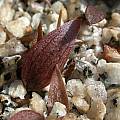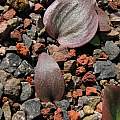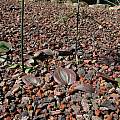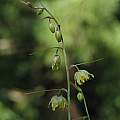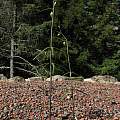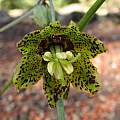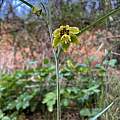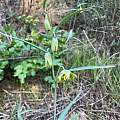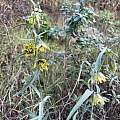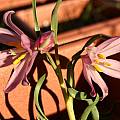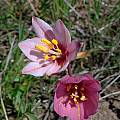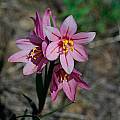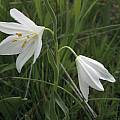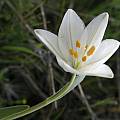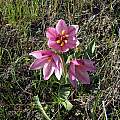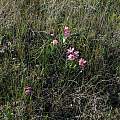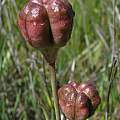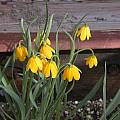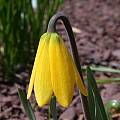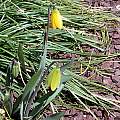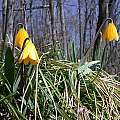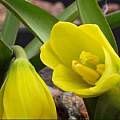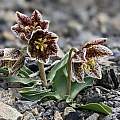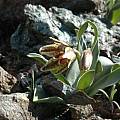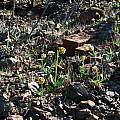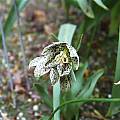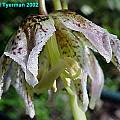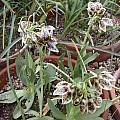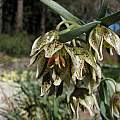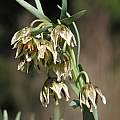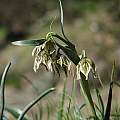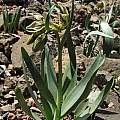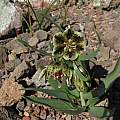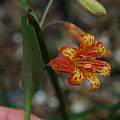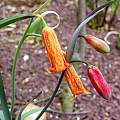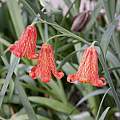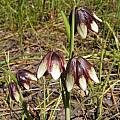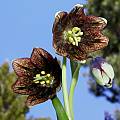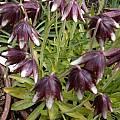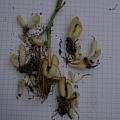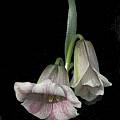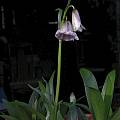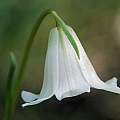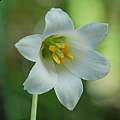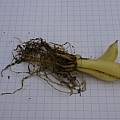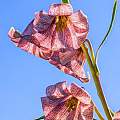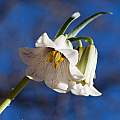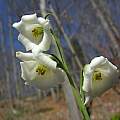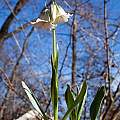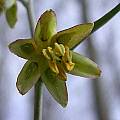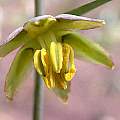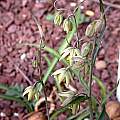There are about 20 species of Fritillaria in western North America. Although they occur in Canada and 16 different states in the United States, the majority of them are found in California. Taxa m-z are found on this page.
North American fritillarias a-l
Fritillaria ojaiensis is a rare plant restricted to shady rocky slopes and river basins in San Luis Obispo, Santa Barbara, and Ventura counties. Once considered a variant of Fritillaria affinis, it now has species status. It blooms in spring. Flowers are nodding, green to greenish yellow with dark purple-brown spots on the tepals. Photo 1 was taken by John Lonsdale. Photos 2-6 were taken by Nhu Nguyen at the Tilden Botanic Garden.
Photos taken by Lisa Meeker on the Gridley Trail, Ojai in February.
Fritillaria pluriflora known as the Adobe Lily grows in dense clay and serpentine in some inland valleys of the Northern Coast ranges of California. It is also found in a few spots in north central Sierra Nevada foothills. It is considered rare because of habitat degradation, cattle grazing, and horticultural collecting. It has bowl-shaped pink flowers. Photo 1 from Bob Werra is of a plant that he grows.
Photos below are from Bear Valley where these plants can be seen blooming in mass, usually in March. The winter of 2007 was wetter than the last few and as a result, the floral display was awesome in March 2008! Both the typical pink form and the more unusual white form are shown. Photos 1-4 were taken by Mary Gerritsen. The third photo gives you an idea of the plurality of the bloom. Photos 4-6 show a white form. Photos 5-6 were taken by Bob Werra.
The photos below were taken by Nhu Nguyen of a population on serpentine soil in Lake Co., CA.
Fritillaria pudica comes from western North America, where it is widespread, especially in the Pacific Northwest, growing in areas that are fairly cold and rather dry in winter, and very hot and dry in summer, usually on slopes where there is plenty of moisture during its growth period in spring. It flowers quite early. The illustrated plant was grown from seed collected near the John Day River in north central Oregon and is an especially robust form. Photo 1 from Jane McGary, photos 2-4 from John Lonsdale, and photo 5 from Ian Young.
Fritillaria purdyi is a rare northern California species often found growing in serpentine ridges in chaparral and grasslands where it has little competition. The first two photos from Calflora were taken by Ian Donahue May 2022 in Mariposa County and shared under a CC BY-NC license. Photo 3 was taken by Mary Gerritsen of a population found on top of a serpentine ridge, about 20 miles north of Lake Berryessa, California. Photos 4-5 were taken by Nhu Nguyen around the same area.
The photos below are of plants in cultivation. Photo 1 was taken by Arnold Trachtenberg and photo 2 was taken by Paul Tyerman. Photo 3 taken by Jane McGary shows plants that are about 12 years old (from wild-collected seeds) and are grown in a bulb frame in Oregon. Unlike many related species among the California frits, F. purdyi increases very slowly.
The photos below were taken by Nhu Nguyen at the Tilden Botanic Garden.
Fritillaria recurva see the Fritillaria recurva page. Here are a few representative photos by Mary Sue Ittner and John Lonsdale.
Fritillaria roderickii is a disputed name for a plant that is also sometimes referred to as Fritillaria grayana and was sunk in the Jepson Manual into Fritillaria biflora var. biflora. This plant is still known as Fritillaria roderickii by the state of California where it is listed as endangered and was last found in Mendocino County. The coastal population which some people thought was different from the inland population may be gone. These plants were grown from seeds from some of those last coastal populations. Wayne Roderick sent bulbs to the Dutch who have tissue cultured this plant and sell it as Fritillaria 'Martha Roderick'. It differs from Fritillaria biflora in that it forms rice grains around the bulbs and F. biflora does not usually increase vegetatively. In my garden this plant is much shorter than F. biflora and blooms much later. The first two photos by Bob Rutemoeller. The second was taken looking up under the flowers. The third photo taken by Jane McGary is of plants that were grown from wild-collected seeds and may represent the form sometimes called F. roderickii. The last photo from Jim McKenney is a bulb distributed under the name Fritillaria grayana and grown in zone 7 Montgomery County, Maryland and photographed on June 19, 2008 against a quarter inch grid.
Fritillaria striata is a rare species from the Greenhorn Mountains of Kern and Tulare counties, California. It grows in dense clay soils and has pendent fragrant flowers that are white or white tinged red or pink. The first two photos were taken by Bob Werra and the next two by Mary Sue Ittner. The last shows the bulb as grown by Jim McKenney in zone 7 Montgomery County, Maryland, photographed June 19, 2008 against a quarter inch grid.
The first photo from Calflora was taken by Bob Steele in Tulare County in the month of February and shared under a CC BY-NC license. The rest of the photos were taken by John Lonsdale.
Fritillaria viridea is closely related to Fritillaria affinis, so much so that some regard it as a variety of F. affinis. It is distinct in that it does not have spots and the color can range from light green to almost black. It is native to San Benito County and San Luis Obispo counties, California where it grows among trees and shrubs and grassy margins and on serpentine slopes. Blooming in spring, it has 7 to 13 small green flowers with brownish red or yellow checkering on the outside. Photos by John Lonsdale.
For more information and to see other Fritillaria species and hybrids, go to the wiki pages listed below:
Asian fritillaria a-c - Asian fritillaria d-k - Asian fritillaria l-r - Asian fritillaria s-z - European fritillaria a-o - European fritillaria p-z - Fritillaria index - Miscellaneous fritillaria - North American fritillaria a-l
